13 Swaps to Make Your Home More Plastic-Free
Help save the environment, as well as some money, by implementing these plastic-free alternatives throughout your house.
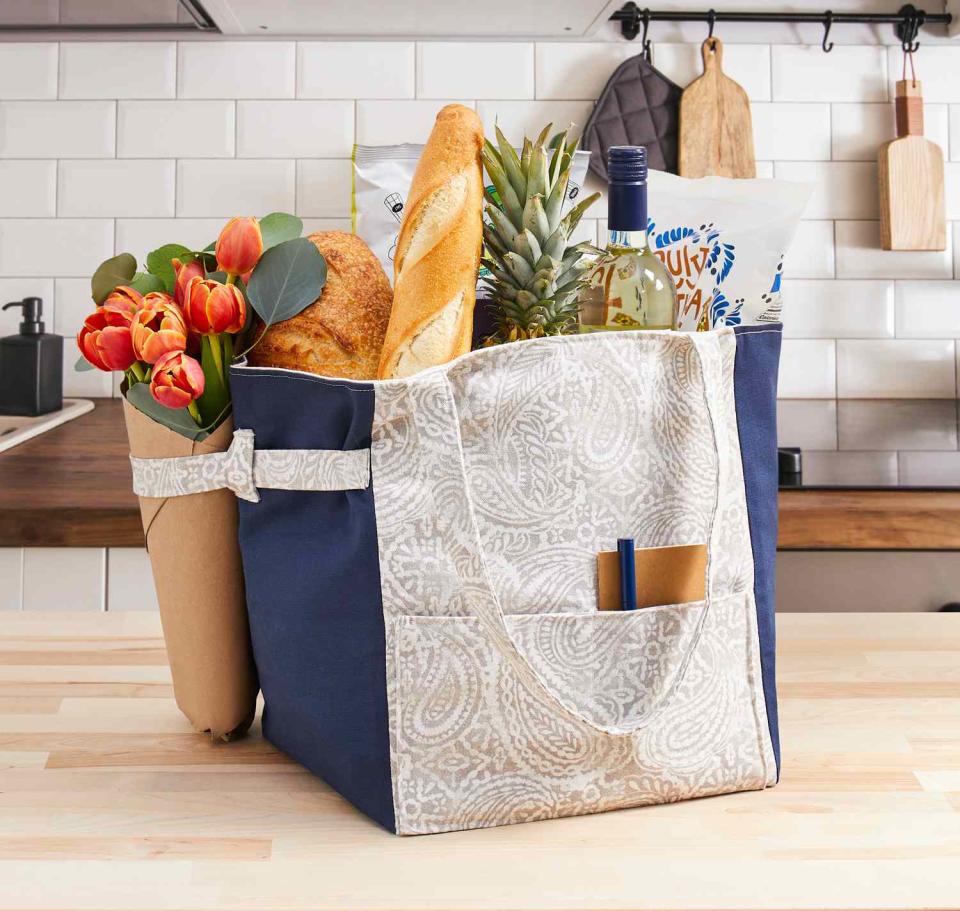
Better Homes & Gardens
Creating a more environmentally-friendly home is easier than you might think. While there are large-scale changes you can make, such as utilizing green building materials or upgrading to the best energy-efficient appliances, there are also small, everyday choices that anyone can make at any time. Each time you exchange something plastic for something more sustainable, you’re creating a healthier home.
And while some plastic-free products might initially cost a bit more to buy, the fact that so many are reusable means that you spend significantly less in the long run—a win-win for everyone! If you’re ready to embrace a more plastic-free lifestyle, start with some of these simple swaps.
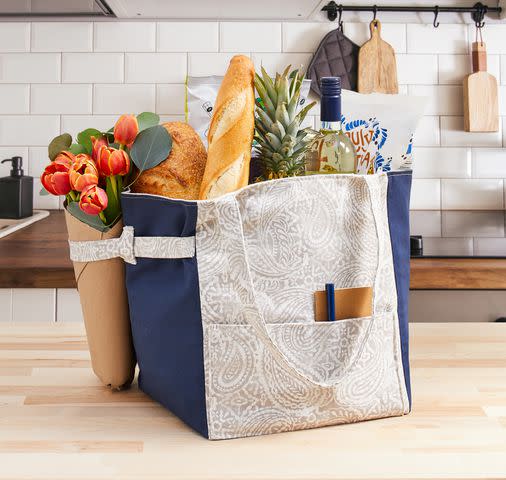
Better Homes & Gardens
1. Swap Out Food Storage
If your food storage situation in the kitchen is a sight for sore eyes to begin with, this is an easy way to stay more organized while also being more environmentally friendly. Recycle the slew of mismatched plastic bottoms and lids and invest in a set of glass food storage containers. As a bonus, you’ll also be improving your and your family’s health as plastic containers often contain chemicals that can be absorbed into food, especially in the microwave.
Related: 10 Genius Solutions for Organizing Food Storage Containers
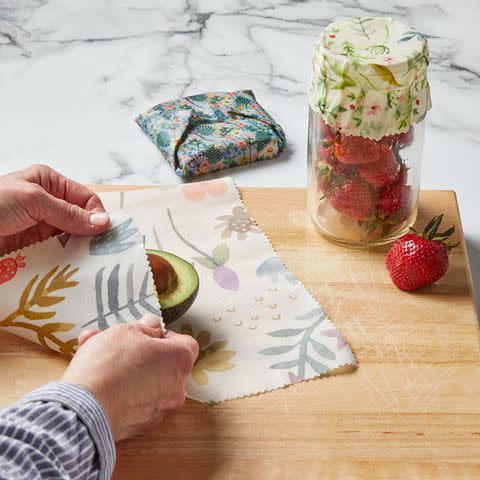
2. Exchange Sandwich Bags for Silicone
Say goodbye to plastic baggies for your sandwiches, snacks, and even travel toiletries by opting for silicone versions instead. These popular bags come in a variety of sizes and are often dishwasher, as well as microwave, safe. They’ll set you back more upfront than traditional bags but just think of how much you’ll save since you won’t need to constantly replace the plastic.
While you’re at it, consider switching from using plastic wrap to cover leftovers with reusable cloths made of beeswax that cling to open dishes and bowls.
Related: How to Make Reusable Snack Bags and Sandwich Wraps
3. Substitute Single-Use Coffee Pods
There’s no shame in using a single serve coffee maker, especially if you’re not a big coffee drinker and only crave a cup at a time. However, even though the grounds are compostable, the plastic pod packaging is not. Skip buying packs of them, purchase ground coffee by the bag, and use a refillable pod instead.
4. Embrace an Emotional Support Water Bottle
The recent water bottle craze has helped remind people to stay hydrated even on the busiest of days and has kept mass amounts of single-use plastic water bottles out of landfills. It’s a no brainer to invest in a few reusable water bottles to keep on your desk or in your car at all times. Use a faucet filter or choose a pitcher filter to refill yours with clean water. Clean them regularly and keep the whole household’s stash of water bottles organized so you can find your favorite in a flash.
Also, consider collecting a few travel coffee mugs to take your at-home brew with you or have a barista fill up on the go.
Related: The 12 Best Water Bottles of 2023 to Quench Your Thirst
5. Lean on Reusable Lunch Items
If you work in an office or send the kids off to school, be sure to have non-plastic lunch accessories on hand. Insulated lunch bags, stainless steel bento boxes, and bamboo or metal cutlery sets (many of which include chopsticks) are a one time investment that you can use over and over. Pair drinks, whether in reusable cups or aluminum cans, with silicone straws that come in their own carry pouches.

Better Homes & Gardens
6. Commit to Reusable Totes
While some states have banned plastic bags from stores, many are still widely available at checkout counters. You can do your part in helping the environment plus keeping plastic out of your home but switching to reusable shopping bags. Look for ones made of fabric, such as canvas, and keep some in the house and your car so you never forget to take them with you when food shopping.
How to Store Reusable Shopping Bags
7. Look for a Local Farmer’s Market
Speaking of groceries, one way to prevent plastic from coming into the house is to avoid pre-packaged produce and other food items. Bring a reusable tote to your local market and fill it up with fruits and veggies to clean and chop once you return home. Head to a butcher or seafood market to stock up on paper wrapped meats and fish. Or, buy and store things like snacks in bulk to cut down on packaging.
Related: Tired of Tossing Food? Waste Less with These Storage Strategies
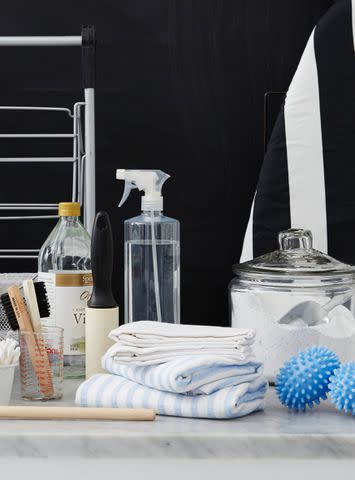
David A. Land
8. Create Your Own Cleaning Products
Commercial cleaning products not only come in plastic packaging, they often contain harsh chemicals. Get yourself a few glass spray bottles, learn how to make natural cleaning solutions, and be sure to label for easy identification. Alternatively, consider buying concentrated formulas to they’ll last longer or choose zero-waste cleaning kits.
Related: 7 Simple Ways to Go Green with Your Cleaning Routine
9. Ditch Plastic Packaging for Paper Goods
While most paper goods aren’t actually made of plastic, the excessive packaging they come in is often full of it. Swap out paper towels for microfiber cloths or try your hand at making your own reusable paper towels. Shop for toilet paper that comes in recyclable paper wrapping and install a bidet attachment to scale down on the amount of rolls your family goes through on a regular basis.
10. Restock Using Refillable Containers and Jars
In response to the plastic-free movement, many companies are offering refillable options for their products. You can order a starter kit for almost anything—such as medicine, shower products, skincare, deodorant, mouthwash, and toothpaste tablets—and then order plastic-free refills when you’re getting low. You may even get lucky and find a refill-station shop in your area.
Additionally, switch to more sustainable products such as silk floss, shampoo bars, menstrual cups, quality metal razors, and electric toothbrushes that only needs the brush head replaced. Or, better yet, opt for a biodegradable bamboo toothbrushes.
11. Load up on Laundry Powder
Instead of using one-time-use pods or detergent that comes in bulky plastic jugs, try using a powder that cleans clothes just as effectively and reduces waste. Another option is plastic-free detergent strips or looking into an eco-friendly laundry company. Continue the trend in the kitchen and use plastic-free dishwashing tablets in lieu of pods or liquid detergent that comes in plastic bottles.
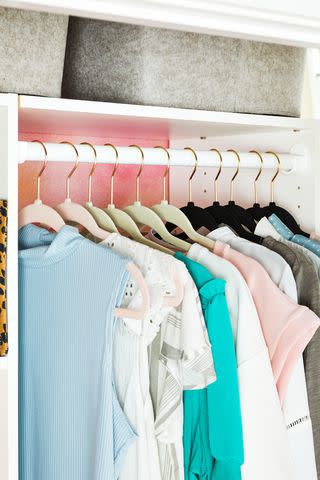
12. Consider Natural Materials When Clothes Shopping
Believe it or not, you can go plastic-free in your closet as well. Going forward, pay close attention to clothing labels and aim to buy pieces made of natural fibers such as linen, cotton, hemp, and even those made of recycled materials. If that’s not always possible, at least attempt to shop secondhand and reduce the amount of plastic packaging that comes along with fast fashion. While you’re in the closet, you can also swap out plastic hangers for a slimline wooden or metal version.
Related: The 11 Best Clothes Hangers for Your Closet, According to Stylists
13. Opt for Eco-Friendly Organizing Products
When it comes to organizing your home, look for tools that are made of recycled or sustainable materials, such as bamboo, or repurpose items that you already have around your home. Unused glass jars can corral craft or office supplies and study cardboard jewelry boxes can sort junk drawer items.
Related: 6 Eco-Friendly Organization Tips to Reduce Waste and Clutter
For more Better Homes & Gardens news, make sure to sign up for our newsletter!
Read the original article on Better Homes & Gardens.

